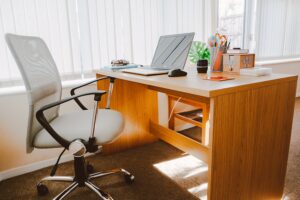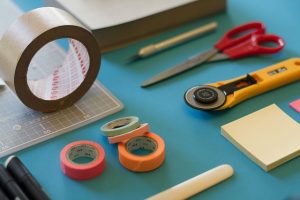The Art of The Office Break Room

We seldom realize the subtle effect that our office space has on our work performance and productivity until we decide to invest in new office décor. If we design our space well, we experience a big difference in our attitude. We’re more open-minded, creative, and courageous. We have a larger sense of what’s possible for our business.
Depending on the nature of the office work, innovative designers are coming up with some interesting themes to make office spaces far more stimulating than traditional offices.
Here are some interesting ideas to stimulate your imagination on how to upgrade your office décor to create a more positive effect on you and your employees:
Refreshing Break Room Themes
It’s easy to overlook the break room when creating a new office space. This is a mistake. A break room should help people to unwind and feel refreshed so that they can go back to work in a good mood. You can instantly improve your employee’s level of satisfaction by adding office water dispensers, providing coffee, and some nutritious food options like fresh fruits and vegetables, nuts and seeds, yogurt and healthy snacks.
In terms of décor, here are some ideas to consider:
- Add interesting lunch tables and chairs for workers to enjoy their meals and chat with their colleagues. For instance, you can add small tables and chairs if you want to simulate a relaxed, restaurant-like atmosphere.
- Change the color of the walls and the layout of the room so that the break room doesn’t look like an extension of your office space, but a different part of the building. The idea, of course, is that workers feel as if they are no longer at work.
- Offer games—billiard tables, Foosball, pinball machines, and other fun games to help your workers relieve their job stress. Playing a few fun games can help people get back into a state of creative thinking and positivity.
Homey Themes
 The idea of the office as a home-away-from-home is becoming a popular design concept. The idea is to infuse the office with things that make an office feel more like home.
The idea of the office as a home-away-from-home is becoming a popular design concept. The idea is to infuse the office with things that make an office feel more like home.
Some quirky, fun ideas some interior designers are trying out include:
- Creating a sleeping area.
- Outfitting a lounge.
- Designing a TV room.
- Adding a gaming room.
Flexible Themes
 Flexible, and coworking spaces are another design concept that is getting some traction If your office has an open floor plan, it might be possible to use furniture that can be moved around easily.
Flexible, and coworking spaces are another design concept that is getting some traction If your office has an open floor plan, it might be possible to use furniture that can be moved around easily.
When employees can decide where they want to work rather they won’t feel confined by a cubicle or workstation. They will feel a sense of comfort and independence that will make them more productive.
Flexible furniture could include light desk and chairs, office couches, and the use of modular technology, for instance, laptops rather than desktops.
Back-to-Nature Themes
An interesting concept for office design is called Biophilic Design. The word derives from “biophilia,” which basically means a love of nature and natural things.
According to Edward O. Wilson’s Biophilia Hypothesis, humans have an innate desire to connect with nature. So, an office space which uses biophilic design might include large windows to allow plenty of natural light, indoor flora, scenic wall art, natural colors, and rustic patterns.
Technology Themes
 Since technology plays such a huge role in our lives, designers are combining minimalist design and technology to create a stimulating environment for workers.
Since technology plays such a huge role in our lives, designers are combining minimalist design and technology to create a stimulating environment for workers.
Technology, in the form of smartboards, wireless charging ports, and video conferencing screens, are integrated into the office design to create a futuristic looking space. In short, an environment that makes employees feel that they are on board the Starship Enterprise from Star Trek.
The idea is that employees should find it easy to manage their projects, communicate, and collaborate. This theme is most suitable for IT firms or other technology-intensive lines of work.
Design Inspired by Environmental Psychology
The reason why some office spaces are far more stimulating for office workers is that designers borrow heavily from the insights of environmental psychology, which is an interdisciplinary theme that studies the interplay between people and their environment. Color, shapes, and images all have a subtle impact on how space affects our moods and behaviors.





